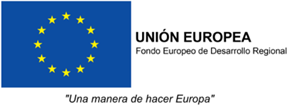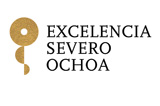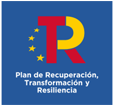Vectores Virales
Aims
The CNIC Viral Vectors Unit (ViVU) is designed to develop tools for gene delivery and gene-therapy in small and large animals. ViVU aims to provide the research community with lentivirus, adenovirus (Ad) and adeno-associated virus (AAV) for basic and preclinical studies.
As pathogenic genes in viruses are completely or mostly eliminated, it is safe to be widely used in multidisciplinary research fields for expressing, suppressing or modifying al type of genes, for in vitro or in vivo research.
Beside multiple national and international collaborations (see publication record), ViVU has successfully applied a new approach to generate tissue-specific transgenics by transducing wild-type animals with different AAV to express genes that induce cardiomyopathies, hyperlipidemia or elevated blood pressure. Thanks to these new models ViVU has been able to demonstrate, among other theories, that extreme exercise triggers the development of ACM (JACC, 2015), that the concentration of lipoproteins in blood is not directly related to the ability to induce atherosclerotic lesions in the great arteries (ATVB, 2015), or that mild elevation in blood pressure represents a potent inductor for atherosclerosis development (IJMS, 2021).
Viral Vector Order
The ViVU currently produces second and third-generation lentivirus, adenovirus, and adeno-associated virus (AAV) pseudotyped with the following capsids: AAV-1, AAV 1.9, AAV-2, AAV-6, AAV-8, AAV-9, AAV-DJ, and AAV-DJ8, for non-profit research purposes.
Lentivirus
Lentiviruses are vectors derived from HIV-1 virus genome and are produced by co-transfection of two (2nd generation) or three (3rd generation) plasmids in HEK 293T cells.
The required components of both systems are as follows:
- Transfer plasmid: Contains the transgene sequence encoding your insert of interest, which is flanked by long terminal repeat (LTR) sequences that enable integration of the transfer plasmid sequences into the host genome. (provided by the user)
- Packaging plasmid(s) and Envelope plasmid (provided by the unit)
Lentiviral requests are produced at three different scales:
- Mini: we suggest this scale for transduction of a small number of cells; establishment of modified cell lines, validation of shRNAs or screening to select the correct construct.
- Maxi: this scale is indicated if you are planning to do a large series of experiments, need to infect huge number of cells, or are working with cells difficult to transduce.
- Mega: this production is indicated if you are planning to perform in vivo
Adenovirus
The adenovirus genome is a linear, double stranded DNA of approximately 36 Kb. To generate recombinant adenovirus, that can be safely used as a genetic tool, its genome has two genes deleted: E1 and E3. E1 gene is implicated on replication of virus and is supplied by the adenovirus packaging cell line 293A. E3 is involved in evading host immunity and it is not essential for virus production. This renders a packaging capacity of > 8 Kb.
In ViVU we can produce adenovirus by two procedures:
- Amplification: starting from stocks of adenovirus.
- De novo Generation: starting from DNA, using pAdEasyTM packaging plasmid.
In the case of amplification, we can produce adenovirus in three scales of production:
- Mini: we suggest this scale for transduction of small number of cells; validation of shRNAs or screenings to select the correct construct.
- Maxi: this scale is indicated if you are planning to do a large series of experiments, or need to infect a huge number of cells or cells that are very refractory to transduction (e.g. MSC, stem cells).
- Mega: this production is indicated if you are planning to perform in vivo injections.
AAVs
AAV-derived vectors (rAAV) are produced by double or triple plasmid transfection in HEK293T cells.
Viruses are generated with capsids of the serotype selected by the customer, among those available at CNIC: AAV-1, AAV-1.9, AAV-6, AAV-8, AAV-9 and AAV-DJ. As far as the shuttle plasmid contains AAV-2 ITRs, there is no restriction or incompatibility between shuttles and capsids, then any shuttle construct can be packaged with any of the serotypes.
To perform in vivo experiments, we recommend the use of AAV6, AAV8 and AAV9 serotypes, depending on the tissue of interest.
To perform in vitro experiments, and according to previously published data, AAV1 and AAV-DJ serotypes are recommended for infection of cells lines.
Final preparations contain 1 mL of purified virus in PBS with 0.001% pluronic F68.
Researcher from outside the CNIC who are interested in our services should contact with any member of the unit.






